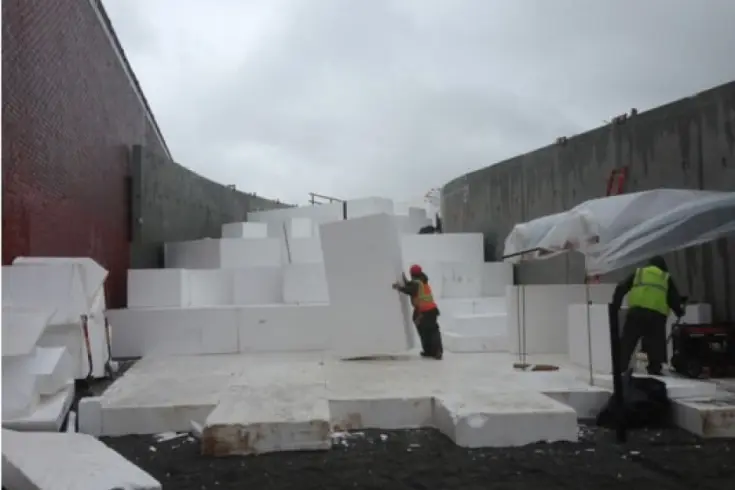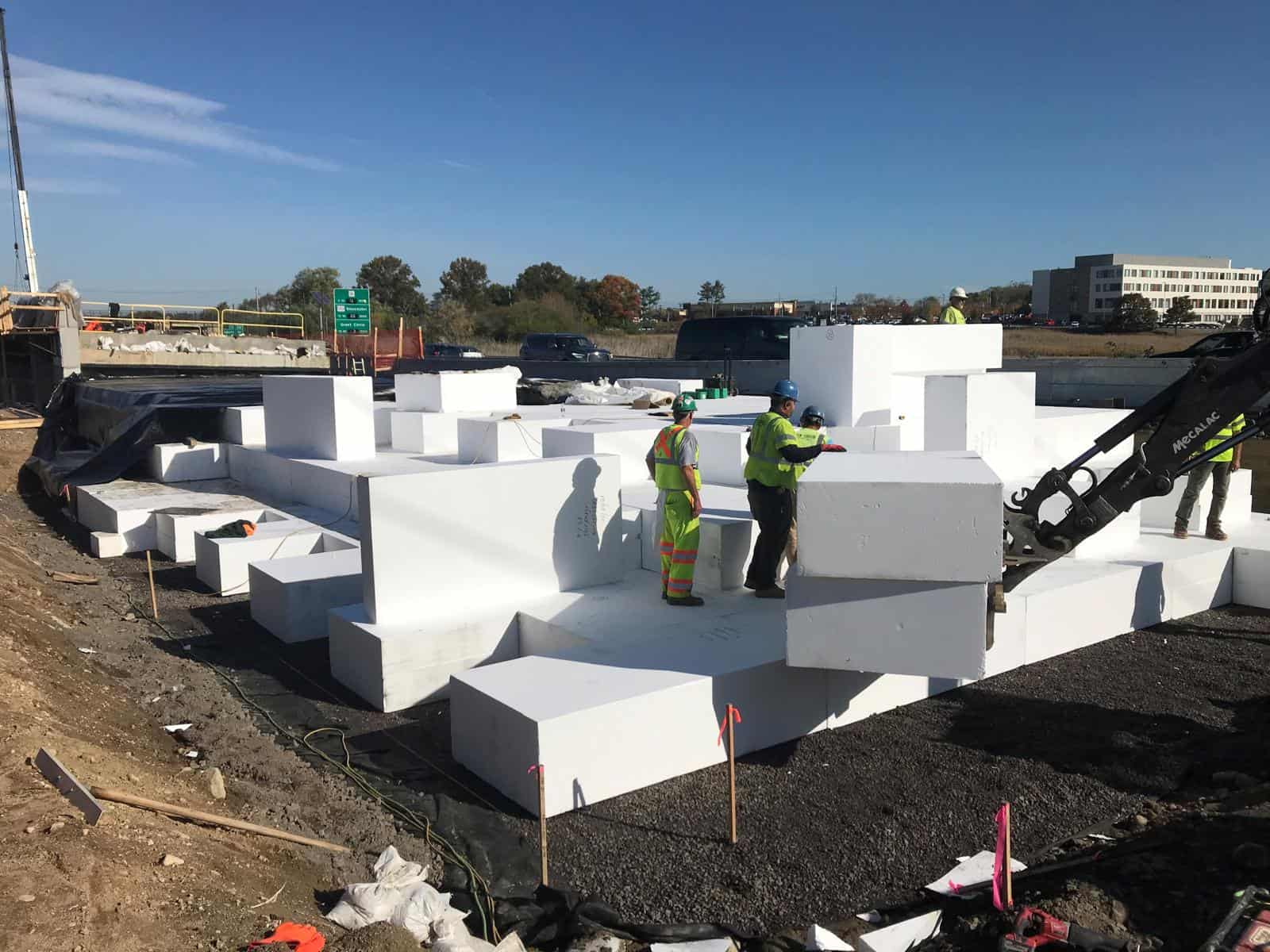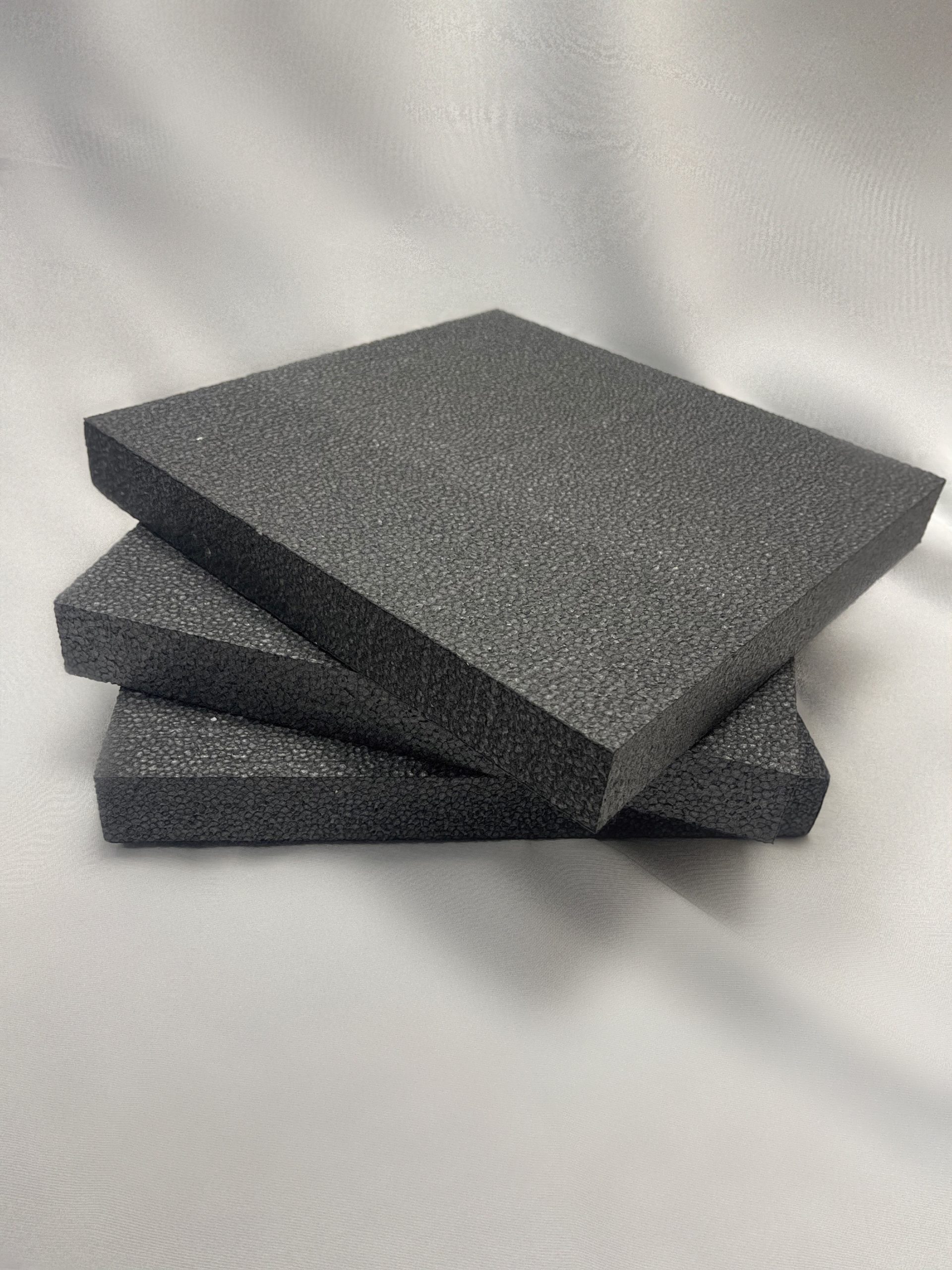Geofoam, pipelines and earthquakes are three words that should never be used in the same sentence. The ugly truth is, it’s a statement that might be heard all over the world any time now. If you’ll remember, we posted a previous article, a retrospective on Hurricane Katrina, and how Geofoam could have helped minimize some of the catastrophic tragedy. Another opportunity to save the day presents itself.
The truth of the matter is that pipelines are being constructed all over the world, as illustrated in this image, courtesy of Pipeline and Gas Journal’s global construction report. With almost 100,000 miles of natural gas pipeline under construction worldwide, there is plenty of opportunity for devastation. About a third of all construction is happening in the United States alone.
Did you know that there are approximately 14,000 earthquakes a year over the entire globe? That’s an estimate from the US Geological Survey Department. Unbelievable that no one is aware of that other than those in the industries that focus on earthquakes and the damage they can create. With the abundance of natural disasters of both earthquakes, tornadoes, tsunamis, cyclones and other havoc and destruction causing events, caution must be taken in advance to avoid disaster. By utilizing products that can minimize or even eliminate catastrophic damage from exploding natural gas lines, oil pipeline ruptures, train derailments hauling volatile and toxic flammables, Geofoam fills the bill quite nicely.
In the image below from our friends at PGJ online, you can see just how many locations are earthquake epicenters, of one magnitude or another. Most of them are where one would expect; along the west coast fault line, etc. Pay attention to the remainder spread throughout the country. Natural gas pipelines are crisscrossing the entire nation, each one ripe for disaster.
How Can We Prevent Catastrophe?
There is no prevention for earthquakes, only minimizing the potential. Geofoam, when used to help mitigate the adverse effects of earthquakes against natural gas, oil, and underground utilities and water lines, saves money and lives. An excerpt from a report by Pipeline and Gas Journal:
There are several methods for mitigating the effects of seismic activity on infrastructure, among the most notable being the use of EPS geofoam as a seismic buffer for buried structures and rigid retaining walls. Six years ago, Canadian engineers Richard Bathurst, Saman Zarnani and Andrew Gaskin showed, with shaking table testing and numerical modeling [2], that geofoam could reduce the seismic forces on rigid retaining walls. The lightweight EPS blocks that have become ubiquitous in highway embankments, green roofs, and landscape fill are growing in popularity for seismic and other buried applications.
Today the spotlight is shining on geofoam as a material with a large potential for protecting pipelines. “If an earthquake occurs, high-pressure gas lines are one of the most important items to protect,” said Steven Bartlett. “If they rupture and ignite, you essentially have a large blowtorch, which can be catastrophic.” Bartlett is associate professor of civil engineering at the University of Utah. He and his team have been examining geofoam’s mitigating effects on pipeline damage due to seismic faulting since 2007.
Could Geofoam save a community? We’ll report on more natural disasters and the use of Geofoam and geosynthetics in the near future. We are exploring more destruction on a massive scale, and the possibilities that using Geofoam and/or geosynthetics could have played a part in minimizing loss. It boils down (as it usually does) to the human interaction. We are living in the greatest technological age, and we are learning at an astronomic level about every conceivable topic.
Technically speaking, Geofoam can reduce forces from below, above and laterally, as well as vertical shift or compression of the surrounding soils. Pipelines are typically buried under 6 to 8 feet of soil, so they were especially vulnerable to rupture should the soils shift the wrong way. By placing blocks of Geofoam above and beside underground pipelines, whatever stresses occur can be minimized. Should the lines be pushed from beneath or beside, the Geofoam will compress, thereby preventing the lines from rupture. The value of Geofoam is that it is nearly 100 times lighter than soils, and provides resistance against the stresses compressive soils place upon it.
We shan’t forget the fact that natural gas and shale oil are being transported from the fields by tanker car on America’s railroads. Earthquakes can naturally disrupt the ground in which these rail tracks lie, so using Geofoam it the rail bed construction provides a protective cushion, minimizing the shifting of rail beds and tracks. Whether pressure from beneath or beside the rail systems, tracks and trains stand a much better chance of remaining intact. Should reconstruction become necessary after an earthquake, the repair is less costly than by using traditional backfills.
Additionally, its compressive capabilities to minimize static, dynamic and monotonic loads prevent or reduces damage as a result of natural and human-made disasters. Because it is somewhat compressible, it can reduce earth pressures. As an added security measure, a geo-membrane can be used to cover the geofoam blocks to protect it from fuel spills.
While there are no absolutes in natural disasters, nor the mitigation of the damage and destruction they create, technology and affordability can help. Geofoam is a great product used to minimize the static movement of underground structures and buried lines and utilities. It’s popularity of incorporating both liquid and solid Geofoam to stabilize structures, buried lines and the like. Because of its ease of construction, shipping and on-site handling (lightweight at 100th the weight of fill soils), Geofoam is now used worldwide.
As you can see, the more you learn the value of Geofoam, the easier, quicker, less costly and safer your construction projects can be. Stay tuned, as each month we’ll discuss yet another story on the versatility and effectiveness of one of today’s greatest products.
The uses of EPS Geofoam are numerous and it’s value in terms of weight reduction and cost savings are well known by many contractors, construction companies, and architects (to name a few).







